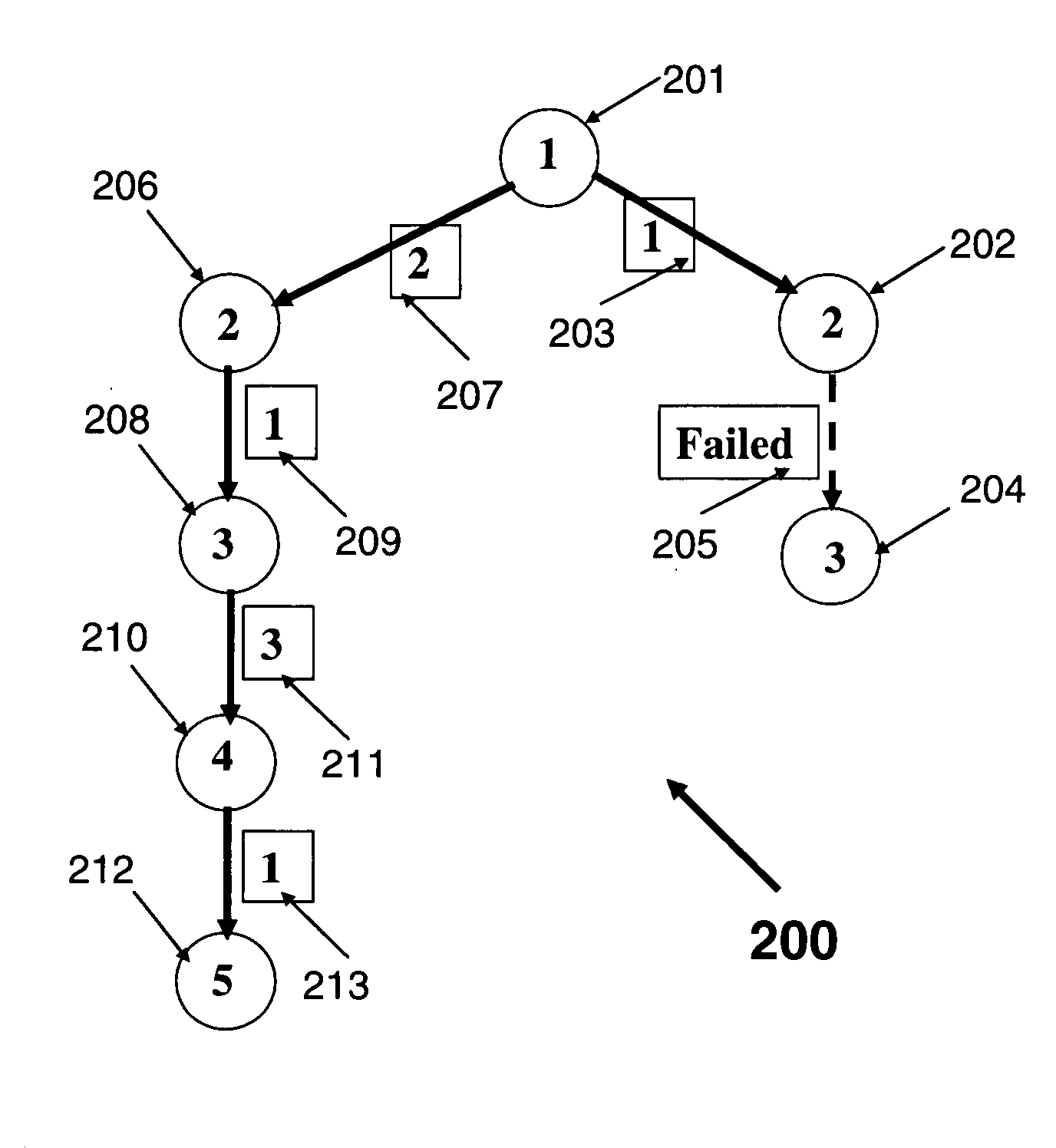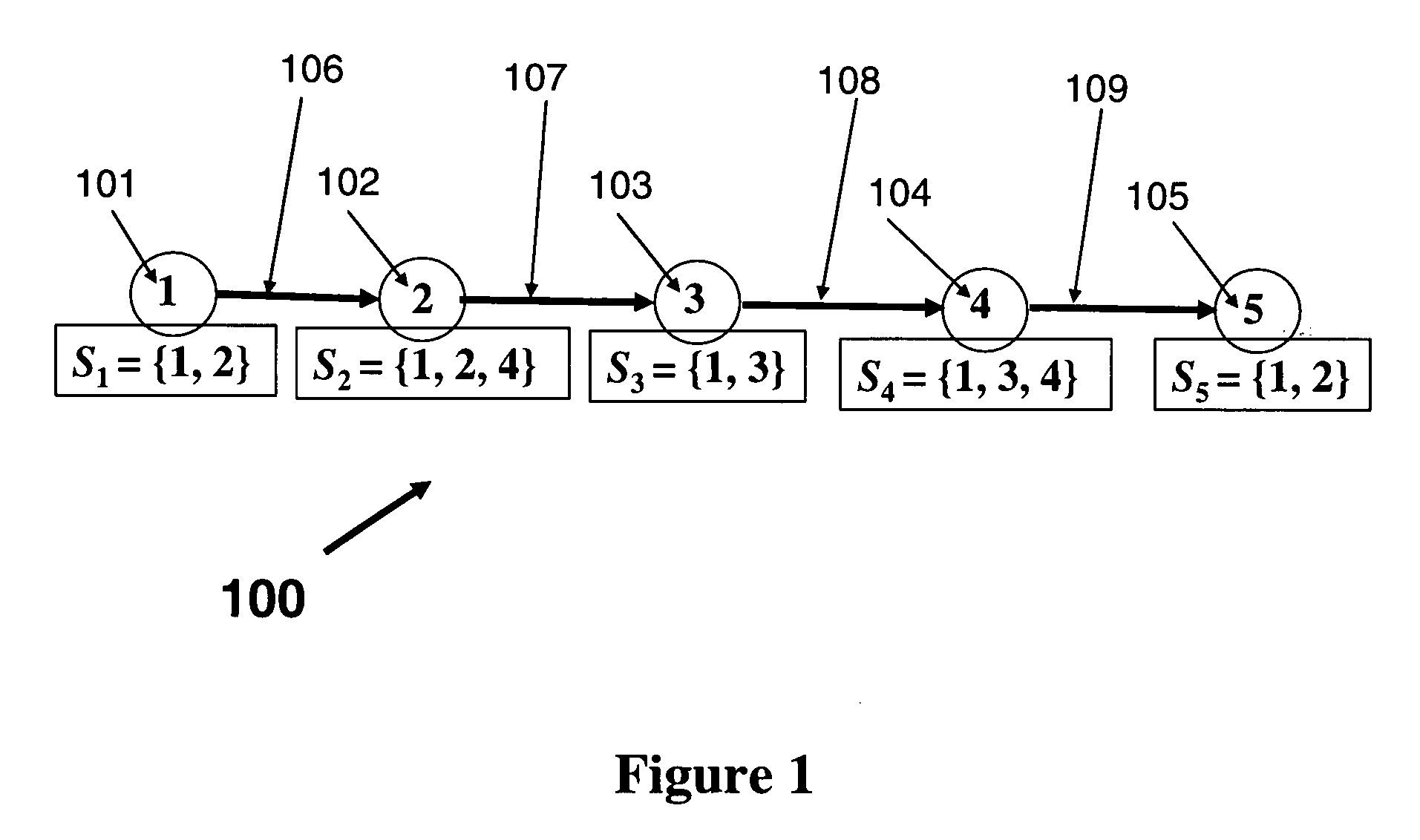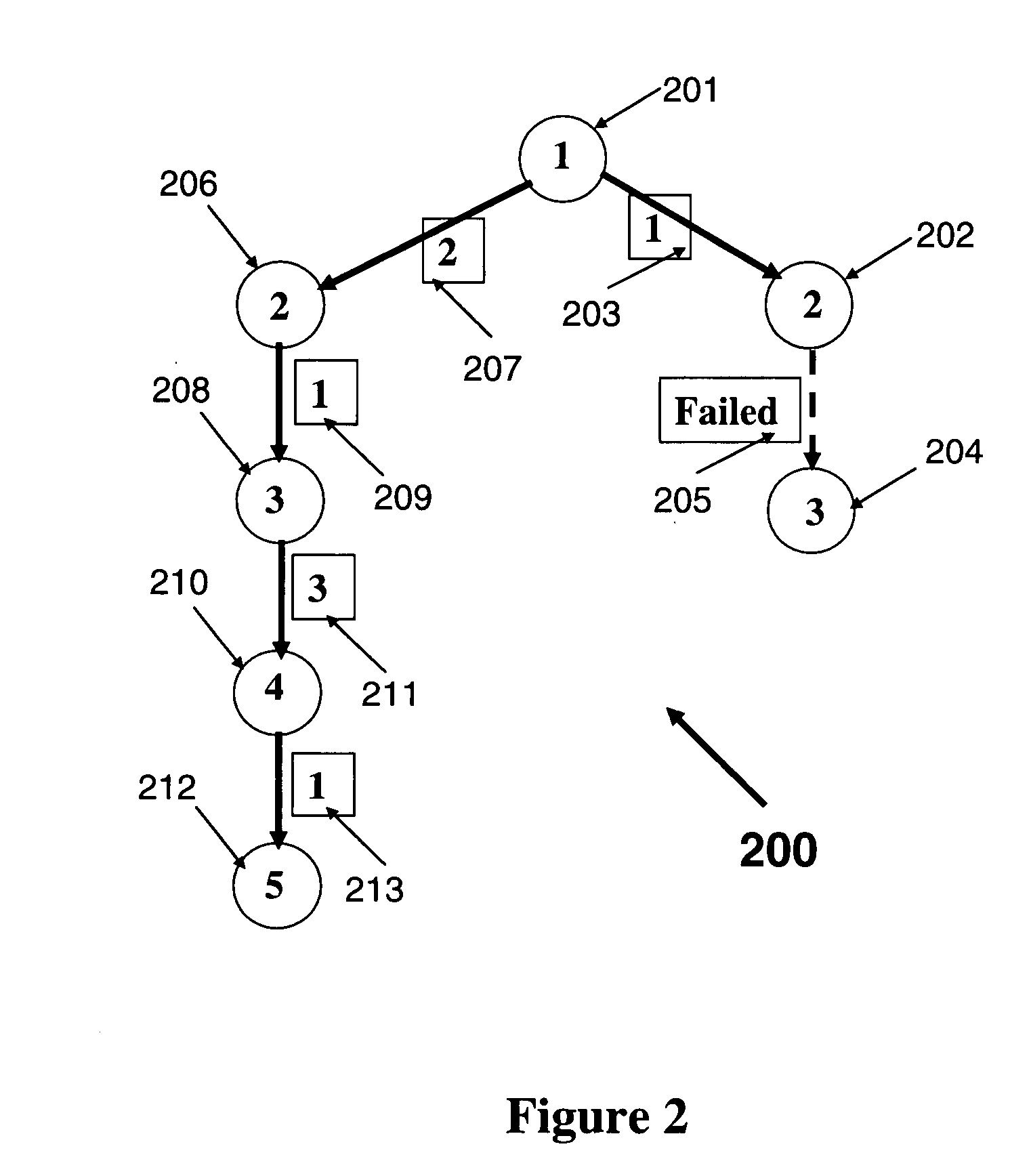Methods for optimal multi-channel assignments in vehicular ad-hoc networks
a vehicular ad-hoc network and multi-channel assignment technology, applied in the direction of network topologies, wireless commuication services, connection management, etc., can solve the problems of inability to use the same channel at a node for both receiving and transmitting information, computational effort, etc., to reduce the computational effort of the depth-first search method and improve the channel selection rule
- Summary
- Abstract
- Description
- Claims
- Application Information
AI Technical Summary
Benefits of technology
Problems solved by technology
Method used
Image
Examples
Embodiment Construction
[0013]Referring now to the figures and FIG. 1 in particular, there is shown an example 100 of an ordered sequence of five nodes 101-105, also labeled as nodes 1-5. The nodes represent moving vehicles and the links 106-109 represent wireless links interconnecting the nodes. For example, link 106 connects node 1 to node 2, link 107 connects node 2 to node 3, and so forth. Note that the network comprising the nodes and links can be viewed as a directed linear tree. Each node has a set of channels available for receiving or transmitting information where the term channel is used as a logical entity. It may represent a frequency band (under FDMA), an orthogonal code (under CDMA), and the like. The set of available channels may differ from one node to the next due to external interferences, other ongoing communications that involve some of these nodes, different equipment used at the nodes, and so forth. For example, node 1 (101) can use channels 1 and 2, as depicted by the set S1={1, 2},...
PUM
 Login to View More
Login to View More Abstract
Description
Claims
Application Information
 Login to View More
Login to View More - R&D
- Intellectual Property
- Life Sciences
- Materials
- Tech Scout
- Unparalleled Data Quality
- Higher Quality Content
- 60% Fewer Hallucinations
Browse by: Latest US Patents, China's latest patents, Technical Efficacy Thesaurus, Application Domain, Technology Topic, Popular Technical Reports.
© 2025 PatSnap. All rights reserved.Legal|Privacy policy|Modern Slavery Act Transparency Statement|Sitemap|About US| Contact US: help@patsnap.com



